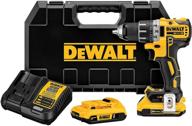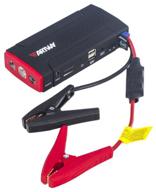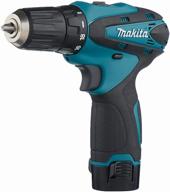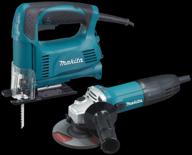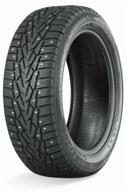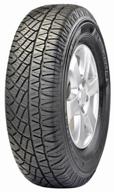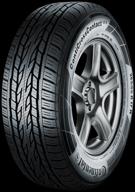
Review on Powerful Makita CX200RB: Sub Compact Brushless with Lithium Ion Technology by Bud Crabtree

Makita LXT small tools can be confused with 12V CXT cousins
It looks like Makita has migrated these tools from the 12V Max CXT platform and a new class of 18V small tools created process. Apparently, Makita's engineers have successfully solved the "what if" scenario about the practicality of upgrading the 18V LXT battery for their 12V Max CXT brushless tools. and voila. 18V LXT Sub-Compact is born! As these instruments share more in common with the 12V Max CXT models than with their larger LXT counterparts, this review focuses on comparing the sub-compact CXT and LXT platforms. More importantly, from a physical point of view these 12V and 18V tools are virtually identical, barring a few minor quirks and cosmetic differences. This puts an end to misleading or downright dishonest tool website reviews that seem to suggest that this new subcompact class is somehow smaller than Makita 12V tools; This is clearly not the case when comparing an 18v brushless motor to a 12v brushless motor (instead of a 12v brushless motor). Features and cosmetic differences are minor at best. There are slight differences in the style of the rubber bumpers on the sides and rear of the motor housing on the 18 volt models, although the all black design of the LXT subcompact platform makes them look completely different at first glance. Instruments, in contrast to Makita's traditional teal and black color scheme. The tip guard is slightly different for some odd reason, as the DT04Z has a clear plastic guard with a glowing (luminous) ring on the front of the tip (similar to the Makita XDT09Z or XDT12Z), while the XDT15ZB just has a rubber bumper on the nose tip (similar Makita XDT14Z). As far as functionality goes, there isn't much here as 12v tools come with a single LED work light, while 18v compacts come standard with dual LED lighting, no doubt made possible by the higher battery voltage . The XDT15ZB and DT04Z share identical controls with Assist Mode (A-Mode), a Makita exclusive feature that helps eliminate screw cams and cross threads by rotating at low speed before impact. The XFD11ZB drill driver is fitted with a 1/2" keyless chuck instead of a 3/8" keyless chuck which is standard on the FD07Z. For comparative information on features, performance and other specifications, see the tables in the attached photos. for the CXT FD07Z (drill) and DT04Z (impact) models and their sub-compact counterparts LXT, XFD11ZB (drill) and XDT15ZB (impact). In terms of horsepower, the two drums are nearly identical, except the 18V XDT15ZB has 40 in-lbs more torque than its 12V cousin. That being said, the XFD11ZB drill/driver benefits the most from the higher voltage, namely 200 rpm, and a pretty decent 70 in-lb of torque increase. (One of my main complaints about the FD07Z has always been its low 1500rpm top speed.) Before I judge, one of the key advantages of 12V devices is the size and weight of the battery. The 12V CXT models are no exception in this regard; These tools weigh 1/2 lb less than LXT subcompacts with a 2.0Ah battery and nearly 3/4 lb lighter when equipped with the larger capacity 4.0Ah option. In short, CXT tools are in the 2-pound class, while LXT subcompacts oscillate in the 3-pound range. The 18V LXT batteries also have some size disadvantages and in general CXT batteries are half the size of the larger 18V LXT power supplies. While the LXT and CXT devices have a nominal 2-inch circumference motor housing, the sheer width of the battery pack becomes a deciding factor: the LXT battery size is almost 3 inches, while the CXT battery size is slightly smaller at 2-1 /2 inches. . That means CXT models can fit into tighter spaces than their LXT counterparts. Finally. No, these tools are not designed for drilling 1/2" holes in 1" thick steel plate, mixing mortar, or 3/8" pounding. "x 5" is repeatedly delayed throughout the day. However, these little ones (including their 12 volt cousins) have plenty of power compared to common screwdrivers and impact wrenches and are more than adequate for about 80-90% of general construction and maintenance buyers or those currently investing in an LXT 18V platform, You won't be disappointed. In fact, a pair of Makita BL1820B batteries costs about $120 or so, which means you get a brushless screwdriver, a brushless impact wrench, a charger, and a tool pouch. over $100. After all, this combination of instruments is highly recommended, especially since there is no better offer. On the other hand, if the weight of the tool is paramount, or you already have CXT brushless models and are happy with their performance, then go for the Makita CXT line. A few final thoughts to complete the picture. Some people comment on tool review sites. even the authors themselves lament (after much hand-wringing, no doubt) that this new class of Makita subcompact tool signals doom and gloom for the 12V platform (regardless of manufacturer). This is complete and utter nonsense, almost to the point of political rhetoric (just to listen to ourselves) and is in line with the assumption that 18v and 20v tools negate the need for 28v and 36v tools or tools , which operate at even higher voltage, eliminate . It's all about simply using the right tool for the job at hand. For example, some might have a Makita XPH07Z impact drill but wouldn't even consider using it to install the switch plate screws as it's overkill, not to mention clunky and impractical; A more practical solution would be to use a small 12 volt drill or just a 4 volt screwdriver. While 18 volt power sources (and higher) may be preferred for larger heavy duty tools such as angle grinders, circular saws, SDS impact drills, etc., is this is not necessarily the case for smaller tools with lower power requirements. The takeaway here is that one size doesn't fit all. In my view, Makita has not "reinvented the wheel” here and created a whole new class of tools; They just saw an opportunity to port some of their new 12V brushless tools to their huge 18V LXT platform.
- One year trial period
- Available in white only


